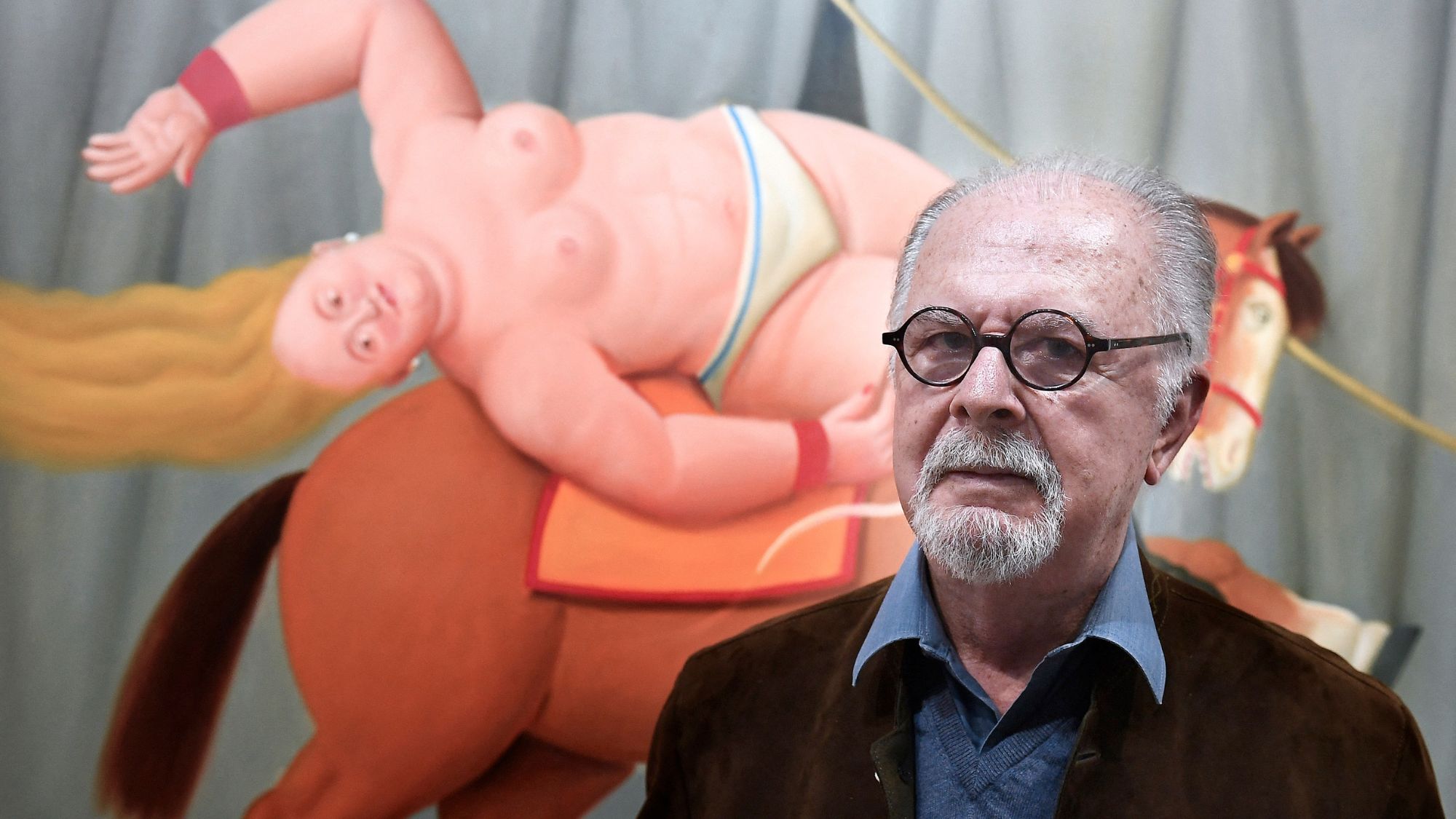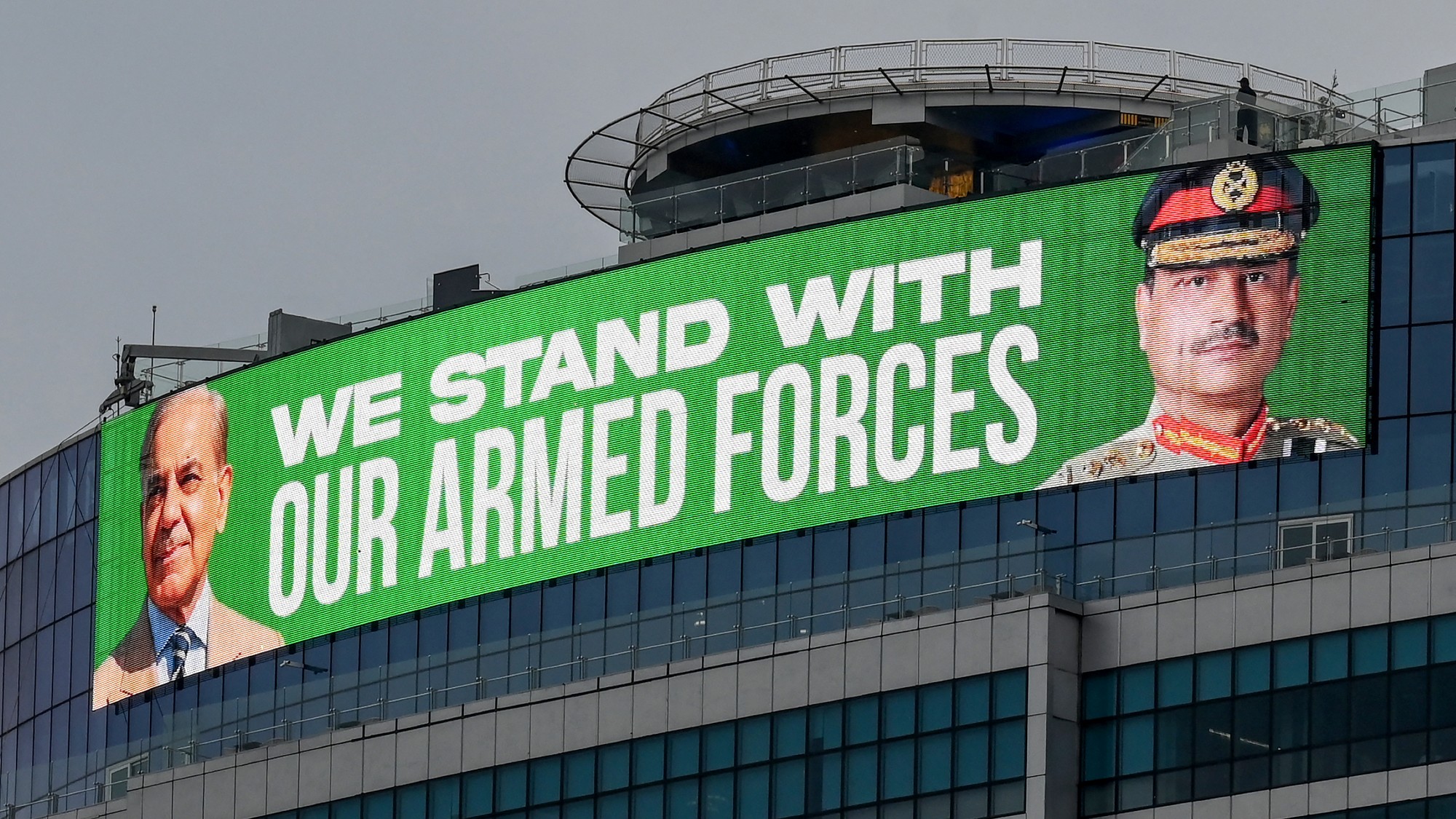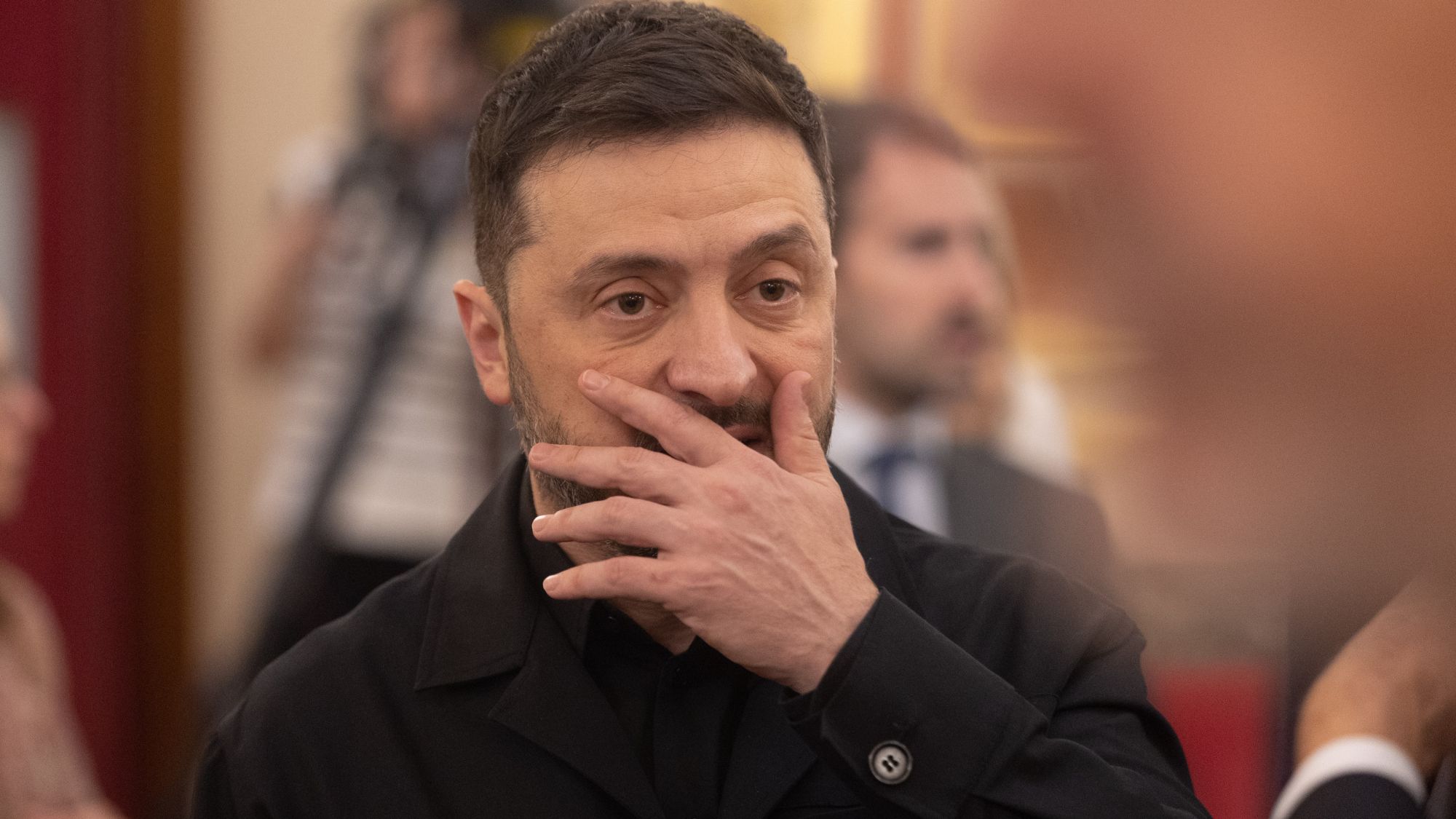Fernando Botero obituary: artist of 'whimsical rotundity'
Colombian painter and sculptor was known for his 'exuberant style'

Fernando Botero, whose paintings of "rotund, inflated yet sensuous figures" made him one of the most famous Latin American artists of the 20th century, died in Monaco on 15 September at the age of 91, said Tim Johnson in The Washington Post. Botero's "exuberant style" drew upon the trend for magical realism to blur the boundaries "between the real and the fantastical", yet in a way that reflected his natural "cheekiness": a typical canvas might see "a humongous ballet dancer en pointe at the barre", or a bulbous likeness of Marie Antoinette "sauntering through the cobblestoned street of a Colombian town".
Botero was born to a family of modest means in Medellín, Colombia, in 1932, said The Times. Although he would spend much of his life abroad, he would mine his native city for artistic inspiration "again and again" through his long life. He committed himself to art early on – after briefly training to be a matador – and held his first exhibition at 19, then left for Europe the following year. In Florence, in 1953, he discovered the work of masters including Piero della Francesca, an experience that would prove "life-transforming". He would combine his own style – influenced by the murals of Diego Rivera – with the techniques of Renaissance painting, reimagining the Mona Lisa as "a fleshy-faced 12-year-old girl, smiling obliquely and clutching a doll".
From the 1960s, Botero's "florid, rounded figures" became immensely popular, said Stephen Kinzer in The New York Times. Critics, however, loathed him, condemning his pictures as whimsical, banal and "out of touch". This perception dogged him until his final decades, when he produced a well-received series of works chronicling the plight of prisoners in Iraq's Abu Ghraib prison. His paintings (and, from the 1970s, sculptures) had always had a satirical edge, frequently featuring "foppish or self-important" authority figures – including "overstuffed" generals and bishops. Yet he always endowed his corpulent subjects with a measure of dignity, and insisted that he "never painted fat people, saying he wished simply to glorify the sensuality of life". Beauty, he would always stress, was very much a relative concern. "There are those who see the monstrous in my work," he once said, "but my work is what it is."
The Week
Escape your echo chamber. Get the facts behind the news, plus analysis from multiple perspectives.

Sign up for The Week's Free Newsletters
From our morning news briefing to a weekly Good News Newsletter, get the best of The Week delivered directly to your inbox.
From our morning news briefing to a weekly Good News Newsletter, get the best of The Week delivered directly to your inbox.
A free daily email with the biggest news stories of the day – and the best features from TheWeek.com
-
 Why it’s important to shop around for a mortgage and what to look for
Why it’s important to shop around for a mortgage and what to look forThe Explainer You can save big by comparing different mortgage offers
-
 4 ways to save on rising health care costs
4 ways to save on rising health care costsThe Explainer Health care expenses are part of an overall increase in the cost of living for Americans
-
 How to financially prepare for divorce
How to financially prepare for divorceThe Explainer Facing ‘irreconcilable differences’ does not have to be financially devastating
-
 How Bulgaria’s government fell amid mass protests
How Bulgaria’s government fell amid mass protestsThe Explainer The country’s prime minister resigned as part of the fallout
-
 Pakistan: Trump’s ‘favourite field marshal’ takes charge
Pakistan: Trump’s ‘favourite field marshal’ takes chargeIn the Spotlight Asim Munir’s control over all three branches of Pakistan’s military gives him ‘sweeping powers’ – and almost unlimited freedom to use them
-
 Pushing for peace: is Trump appeasing Moscow?
Pushing for peace: is Trump appeasing Moscow?In Depth European leaders succeeded in bringing themselves in from the cold and softening Moscow’s terms, but Kyiv still faces an unenviable choice
-
 Femicide: Italy’s newest crime
Femicide: Italy’s newest crimeThe Explainer Landmark law to criminalise murder of a woman as an ‘act of hatred’ or ‘subjugation’ but critics say Italy is still deeply patriarchal
-
 Brazil’s Bolsonaro behind bars after appeals run out
Brazil’s Bolsonaro behind bars after appeals run outSpeed Read He will serve 27 years in prison
-
 The $100mn scandal undermining Volodymyr Zelenskyy
The $100mn scandal undermining Volodymyr ZelenskyyIn the Spotlight As Russia continues to vent its military aggression on Ukraine, ‘corruption scandals are weakening the domestic front’
-
 Americans traveling abroad face renewed criticism in the Trump era
Americans traveling abroad face renewed criticism in the Trump eraThe Explainer Some of Trump’s behavior has Americans being questioned
-
 Massacre in Darfur: the world looked the other way
Massacre in Darfur: the world looked the other wayTalking Point Atrocities in El Fasher follow decades of repression of Sudan’s black African population